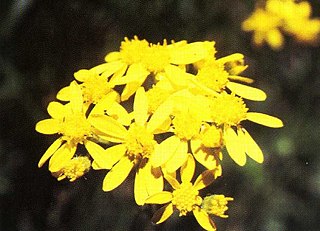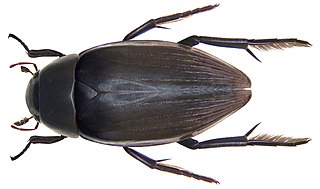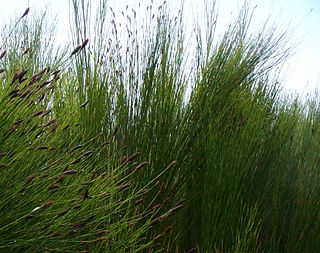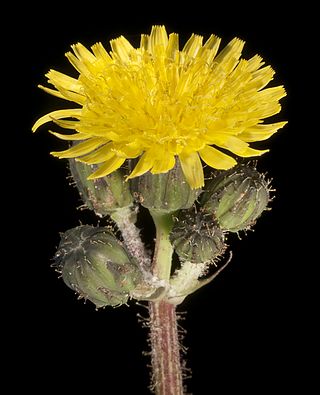
The Restionaceae, also called restiads and restios, are a family of flowering plants native to the Southern Hemisphere; they vary from a few centimeters to 3 meters in height. Following the APG IV (2016): the family now includes the former families Anarthriaceae, Centrolepidaceae and Lyginiaceae, and as such includes 51 genera with 572 known species. Based on evidence from fossil pollen, the Restionaceae likely originated more than 65 million years ago during the Late Cretaceous period, when the southern continents were still part of Gondwana.

Flagellaria is the sole genus in the flowering plant family Flagellariaceae with only five species. The family has historically been recognized by few taxonomists. The APG II system, of 2003, does recognize such a family, and assigns it to the order Poales in the clade commelinids, in the monocots.

Biddle Street, Yatton is a 44.8 hectare biological Site of Special Scientific Interest (SSSI) near the village of Yatton in North Somerset, notified in 1994.

Tickenham, Nailsea and Kenn Moors SSSI is a 129.4 hectare biological Site of Special Scientific Interest between Tickenham, Nailsea and Kenn on the North Somerset Levels, notified in 1995.

Catcott, Edington and Chilton Moors SSSI is a 1083 hectare biological Site of Special Scientific Interest in Somerset, England notified in 1967. It is close to the villages of Edington and Catcott.

Tealham and Tadham Moors is a 917.6 hectare biological Site of Special Scientific Interest south of Wedmore in Somerset, notified in 1985.
Pentameris is a genus of plants in the grass family, native primarily to Africa, with a few species in Yemen and on certain islands in the Indian Ocean.

Senecio hydrophilus is a species of flowering plant in the aster family known by the common names water ragwort and alkali-marsh ragwort. It is native to western North America from British Columbia to California to Colorado, where it grows in swampy places such as marshes. It can grow in standing water, including alkaline and salty water. It is a biennial or perennial herb producing a single erect stem or a cluster of a few stems which may exceed one meter in maximum height, at times approaching two meters. The stem is hollow, waxy in texture, and often pale green in color, and it emerges from a small caudex. The thick leaves are lance-shaped to oval with smooth or toothed edges, the blades up to 20 centimeters long and borne on petioles. Smaller leaves occur farther up the stem. The inflorescence is one or more large, spreading clusters of many flower heads. They contain many yellowish disc florets at the center and sometimes have small yellow ray florets as well.

Xantho hydrophilus, the furrowed crab or Montagu's crab, is a species of crab from the family Xanthidae. It is yellowish-brown and grows to a carapace width of 70 mm (2.8 in). It is a nocturnal omnivore that lives in shallow marine waters from western Scotland to the Cape Verde Islands.

Hydrophilus is a genus of beetles in the family Hydrophilidae, the water scavenger beetles. There are 53 species in three subgenera in the genus: Hydrophilus, Dibolocelus, and Temnopterus.

Hydrophilus piceus is a species of beetles in the family Hydrophilidae, the water scavenger beetles. This very large aquatic beetle is found in the Palearctic and is known by the common name great silver water beetle.

Hydrophilus acuminatus, common name dark diving beetle, is a species of water scavenger beetles belonging to the family Hydrophilidae.
Mastersiella is a group of plants in the Restionaceae described as a genus in 1930.
Hydrophilus is the scientific name of two genera of organisms and may refer to:
Nevillea is a group of plants in the Restionaceae described as a genus in 1984. The entire genus is endemic to Cape Province in South Africa.

Platycaulos is a group of plants in the Restionaceae described as a genus in 1984. The genus is native to Africa including Madagascar.

Sonchus hydrophilus is a species of flowering plant in the family Asteraceae which is native to Australia and New Guinea. It was first described in 1965 by Loutfy Boulos.












